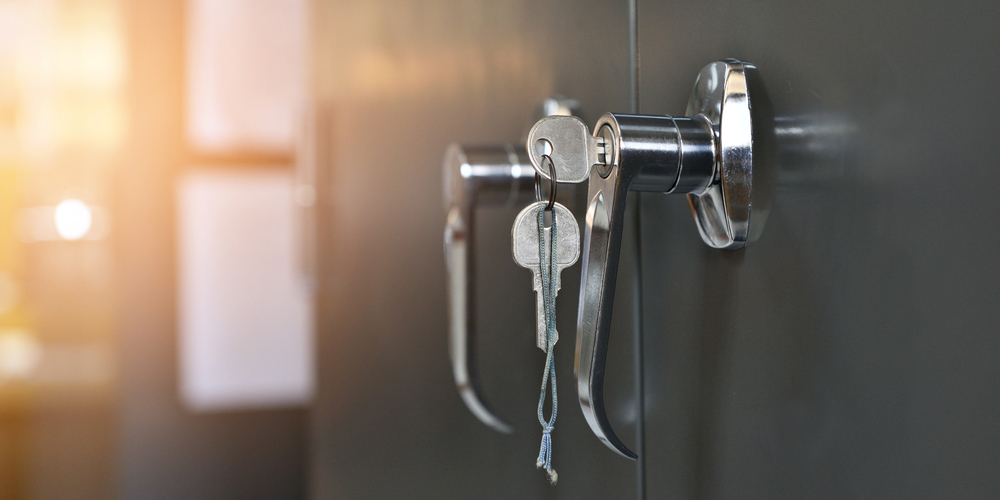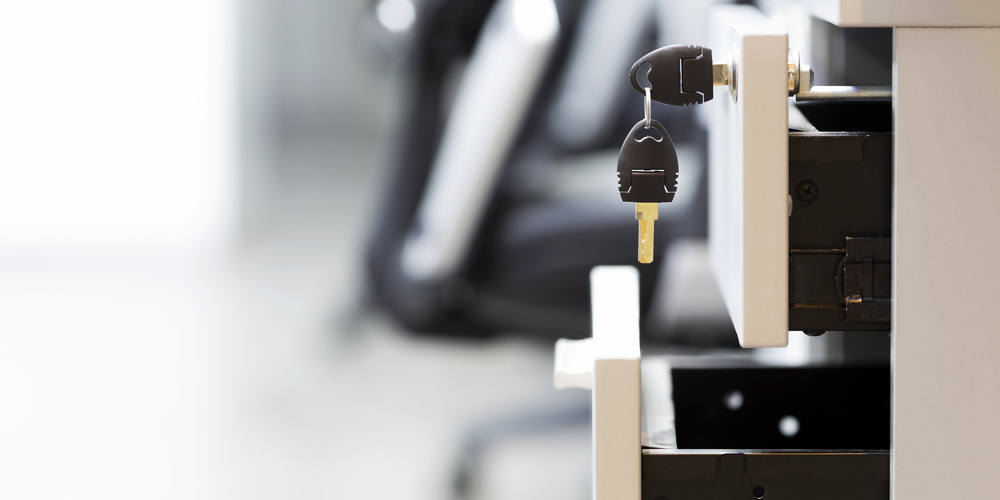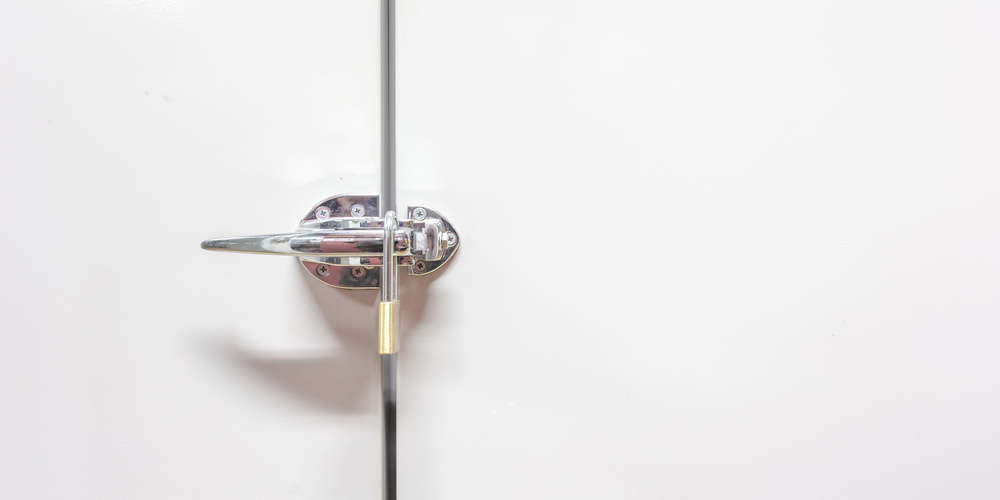Lock Blog
A resource for consumers, locksmiths, and security professionals
A resource for consumers, locksmiths, and security professionals

Am I the only one who automatically thinks of spy movies as soon as I see file cabinet locks anywhere? No? Years ago it used to be that every spy had to break into some file cabinet and use high-tech gadgetry to bypass file cabinet locks. In this day and age, it seems as if spy movies have become a lot more convoluted and over the top, but I digress. We are here today to explore the world of file cabinet locks, and try and understand the level of security that they provide. Before we dive too deep into the mystery behind the security of file cabinet locks, we should take some time to understand what they are, and how they are used, which is what the next section will talk about.
File cabinet locks are widely used to secure file cabinets or filing cabinets. These cabinets are used as a means for storing important documents, files, and folders, and they are extensively used by commercial properties. There are some homeowners who use them, but not many that I at least know of. File cabinets make organization easy and even though much of the world is beginning to move into the digital age, file cabinets are still holding on and helping to keep organizations grounded.
There are a few different types of file cabinets that commercial businesses can choose from when they are looking to acquire storage options. File cabinet locks are somewhat similar to other locks except when it comes to their level of security, but we will explore that in the coming paragraphs. File cabinets make use of keyed locking mechanisms (most commonly single sided wafer locks), push button locks, locking bars, and even some keypad options.
However, the most common type of file cabinet lock is still the keyed locking mechanism and this can be attributed to how long it has been available on the market. It is a similar scenario to the current state of traditional locks and smart locks. Due to the fact that one has been in use for much longer, it is still the most prevalent lock that residential properties gravitate towards.

The question about the security of file cabinet locks is not an easy one to answer, but it it is one which I will attempt regardless. One of the best ways to gauge the inherent security of file cabinet locks is to compare them to other locks and see the way they hold up. Another method simply involves taking a deeper look at the way file cabinet locks work, and today I am going to try to do both, so that I can give you an adequate answer about the security level of file cabinet locks.
I will start off by saying that if you think file cabinet locks are going to be as strong as the Sargent & Greenleaf 951C that you might recognize from our list of the best padlocks of all time, you are wrong. If you take standard file cabinet locks at face value, they are not very secure. Many of the locks that furniture manufacturers place on their file cabinets are simple and standard locks, which serve the simple purpose of keeping the cabinet locked.
Simply keeping something locked, when there is no force being applied to it, is not a very good metric for security. If a lock is not capable of keeping the contents of the file cabinet secure, then it is not a secure mechanism. In order for a lock to be considered secure, it has to be able to withstand some amount of force, as well as keep its contents secure from a myriad of threats.
The use of relatively simple locks on these filing cabinets is not the only security flaw that filing cabinet locks have. If you know anything about locks by now, you will know that every lock has a key and said key plays a vital role in the overall security of the lock it is paired with. Most file cabinet locks are paired with keys that have specific key codes printed on them. This makes it very easy for someone to make a duplicate of your file cabinet key if they so desire. There are no measures in place to prevent this eventuality except an individual’s moral compass, which is not necessarily something we can rely on.
If you look at a lock and are able to conjure up multiple easy ways to break into it, then it should be a clear sign that the particular lock is not a reliable security option. As far as security goes, the file cabinet locks that most manufacturers place on their cabinets are hardware props and nothing more. Aside from the fact that the keys have their own vulnerabilities, there is the added vulnerability that these locks can be easily picked or forced open with a little application of force.
The lockpicking methods that would be used on file cabinet locks are very similar to the lockpicking methods you would use on any residential lock. The only difference in this process is the fact that residential locks have been built to withstand many of these bypass measures. A lot of this is done by implementing anti-pick, anti-drill, and anti-snap measures. When it comes to a file cabinet lock (even in some of the higher end models), the security can easily be threatened by something as simple as a hammer that is applied with enough force.
Manufacturer installed file cabinet locks are difficult to trust, and for good reason. Some of these locks can be opened in under 30 seconds by an object as accessible as a nail clipper. Now, do not take this to mean that every file cabinet lock that you come across has subpar security. Many lock companies have realized the need for better file cabinet lock security, and they have made locks that are meant to offer up much more security. I believe that if you still want to utilize file cabinets within your office or your home, then you should make it a point to contact a locksmith to install new locks, rather than settling with those that are given by the manufacturer.
Key Takeaways
Since there is a lot of information to digest in the section above, I want to highlight the important aspects of file cabinet locks before we moved on:
This section will be brief, but I simply wanted to take the time to compare the security of standard file cabinet locks with some of the other locking mechanisms that have been discussed on this blog. Comparing the effective natures of these different security mechanisms helps put the security of file cabinet locks in perspective.
If you make the assumption that most residential and commercial locks are far stronger than file cabinet locks, you would be right (for the most part). You might be tempted to think that the reason behind this is a simple matter of size. I mean, if it is a much smaller lock, it should be easier to bypass and damage, no? This is why vaults are much more secure than your average commercial door lock. The truth is, the size of the lock does not always reflect its level of security.
The main reason why most residential and commercial locks are more secure than file cabinet locks is not due to their size. Rather, it is due to the materials that are used to construct them, as well as the layout of their internal locking mechanism. Many residential and commercial locks are constructed out of steel alloys and other robust metals that make them harder to cut through and tamper with. If you compare these locks to a simple file cabinet lock, there is no way you would choose the latter as the more secure option.

There are several measures that you can take advantage of to help increase the security of your file cabinet locks and really set them far above their standard counterparts. Here are some of the security measures that you can utilize with your file cabinet locks:
I hope that you do not walk away from this thinking that you should dismiss all the file cabinet locks that you come across. However, I do think that you should be wary of them and that you never rely on just file cabinet locks to keep your important company records, or personal records, secure. Take the time to understand the flaws that your file cabinet locks might have, and then work to build layers of security around them. Hopefully, this article has given you some insight into the level of security of file cabinet locks, and has helped show you the ways you can help make them more secure.
Category: Commercial, Lock Types, Residential, Safety & Security